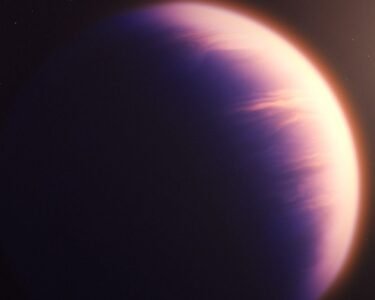Astronomers frequently use numerous telescopes to observe things in space like sonifications. Each telescope adds its information to whatever is being examined because it can all detect distinct kinds of light.
Sonifications release in Astronomy
Similarly, sonification is helpful in converting digital data into sound. In some ways, this is akin to how different musical scale notes can be performed in unison to produce harmonies that are impractical to achieve with only one note. NASA has been creating “sonification” of astronomical data of space objects during the last few years. This initiative converts the digital data that its telescopes in orbit have collected—the majority of which is undetectable to our unassisted eyes—into musical notes and sounds so that they can be heard rather than seen.
Sonifications to Explore Stellar System
These sonifications use the Chandra X-ray Observatory, James Webb Space Telescope, Hubble Space Telescope, and Spitzer Space Telescope of NASA to portray specific light wavelengths through layers of sound. R Aquarii (above). Two stars, a white dwarf and a red giant, are in close orbit in the stellar system known as R Aquarii. Hubble data (red and blue) in a composite visual image show stunning features that are proof of explosions produced by the two stars buried in the image’s core. Chandra’s X-rays demonstrate a jet from the white dwarf striking the surrounding material and generating shock waves.
In the sonification of R Aquarii, the composition develops as a clockwise, 12-hour scan of the image akin to that of radar. In both Hubble’s visible light and Chandra’s X-ray images, the volume varies in proportion to the brightness of the sources, while the distance from the center determines the musical pitch (higher notes are present). “Diffraction spikes,” which are leftovers from the core star’s brilliant glow, are the loud thumps that can be heard in the corners of the image.
The white dwarf’s jets may be heard owing to sonifications as the cursor moves close to the two and eight o’clock positions. Hubble’s ribbon-like arcs produce a rising and falling tune that resembles a set of singing bowls (metal bowls that emit various tones when pounded with a mallet), whereas Chandra’s data are produced with a sound that is more akin to a windy purr.
Sonifying the Steffan of Quintet
The pitch varies the brightness in various ways as the pointer advances. The stars in the foreground and background of the visual imagery Webb discovers are translated to various notes on a synthetic glass marimba. Stars with diffraction spikes are used as crash symbols in the meantime. The galaxies of Stephan’s Quintet can be heard as they pass over in the scan as smoothly changing frequencies all due to sonifications. A synthetic string sound represents the X-rays from Chandra, which show a shock wave that has superheated gas to tens of millions of degrees.
Sonifications of Dusty Galaxy
The Chandra X-ray image displays hot gas in the galaxy and point sources in the background that are a combination of objects in M104 and quasars. Diffuse X-ray emission can be seen more than 60,000 light years away from the M104’s center, according to Chandra measurements. (The galaxy’s diameter is 50,000 light years.) We can listen to each form of light independently or all at once by sonifying these data. Either method scans the image from top to bottom, starting at the top.
The loudest and highest frequencies are produced by the sources that are brightest in the image because brightness influences both volume and pitch. Different types of sounds are assigned to the data from the three telescopes. Chandra’s X-rays have a synthesizer-like sound, Spitzer’s infrared data are like strings, and Hubble’s optical light has bell-like tones. The sonification of these data reveals the galaxy’s nucleus, its spiral arms and dust lanes, as well as point-like X-ray sources.
CXC and NASA behind Sonification
The Chandra X-ray Center (CXC) was in charge of these sonifications, which were a part of NASA’s Universe of Learning (UoL) initiative. Kimberly Arcand, a visualization scientist at CXC, Matt Russo, an astrophysicist, and Andrew Santaguida, a musician with the SYSTEM Sounds project, were the driving forces behind the collaboration.
NASA’s Marshall Space Flight Center oversees the Chandra program for sonifications, with the management of scientific endeavors falling under the purview of the Chandra X-ray Center located at the Smithsonian Astrophysical Observatory in Cambridge, Massachusetts. Meanwhile, flight operations are administered in Burlington, Massachusetts.
The research that formed the basis of NASA’s Universe of Learning resources was supported by the agency through cooperative agreement grant number NNX16AC65A given to the Space Telescope Science Institute, which collaborated with Caltech/IPAC, the Center for Astrophysics | Harvard & Smithsonian, and the Jet Propulsion Laboratory.





